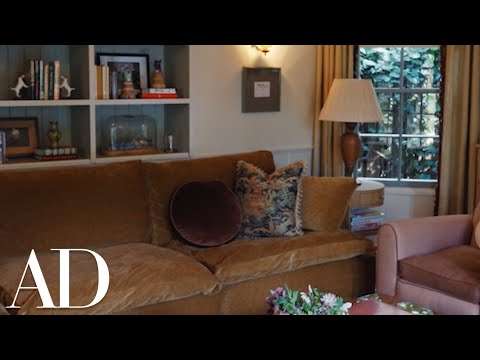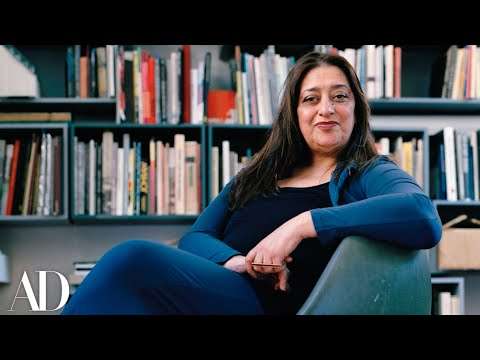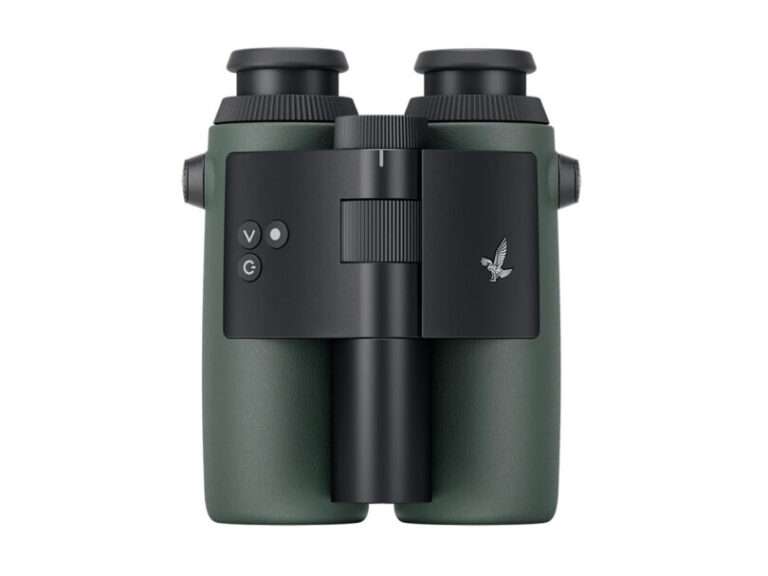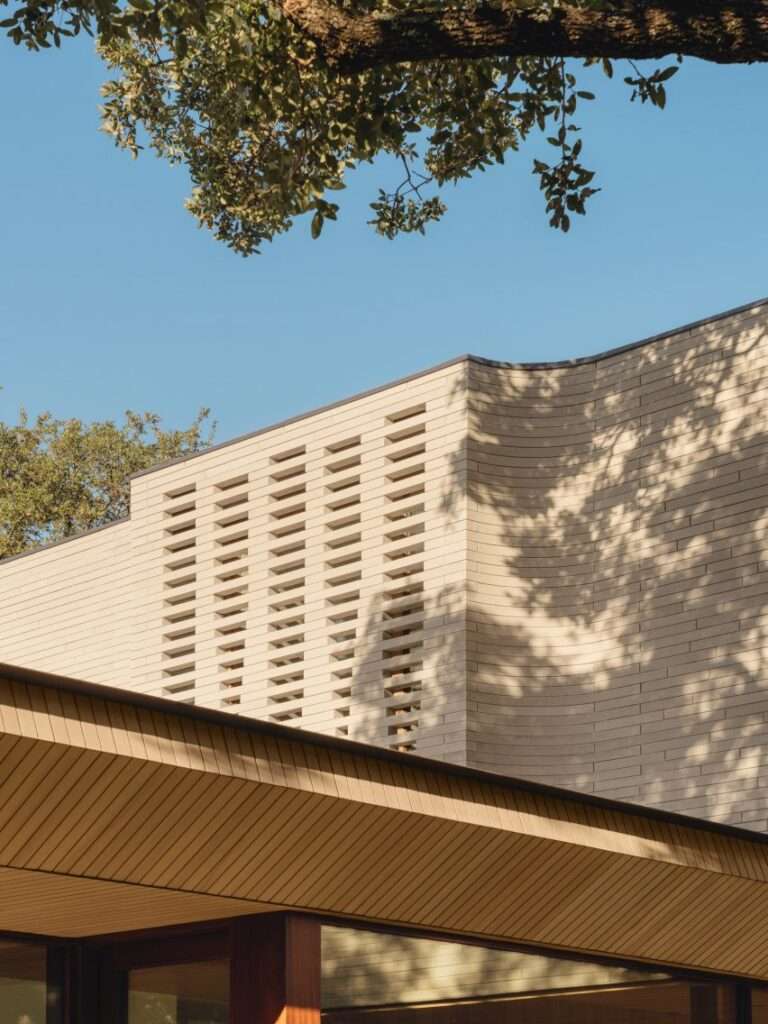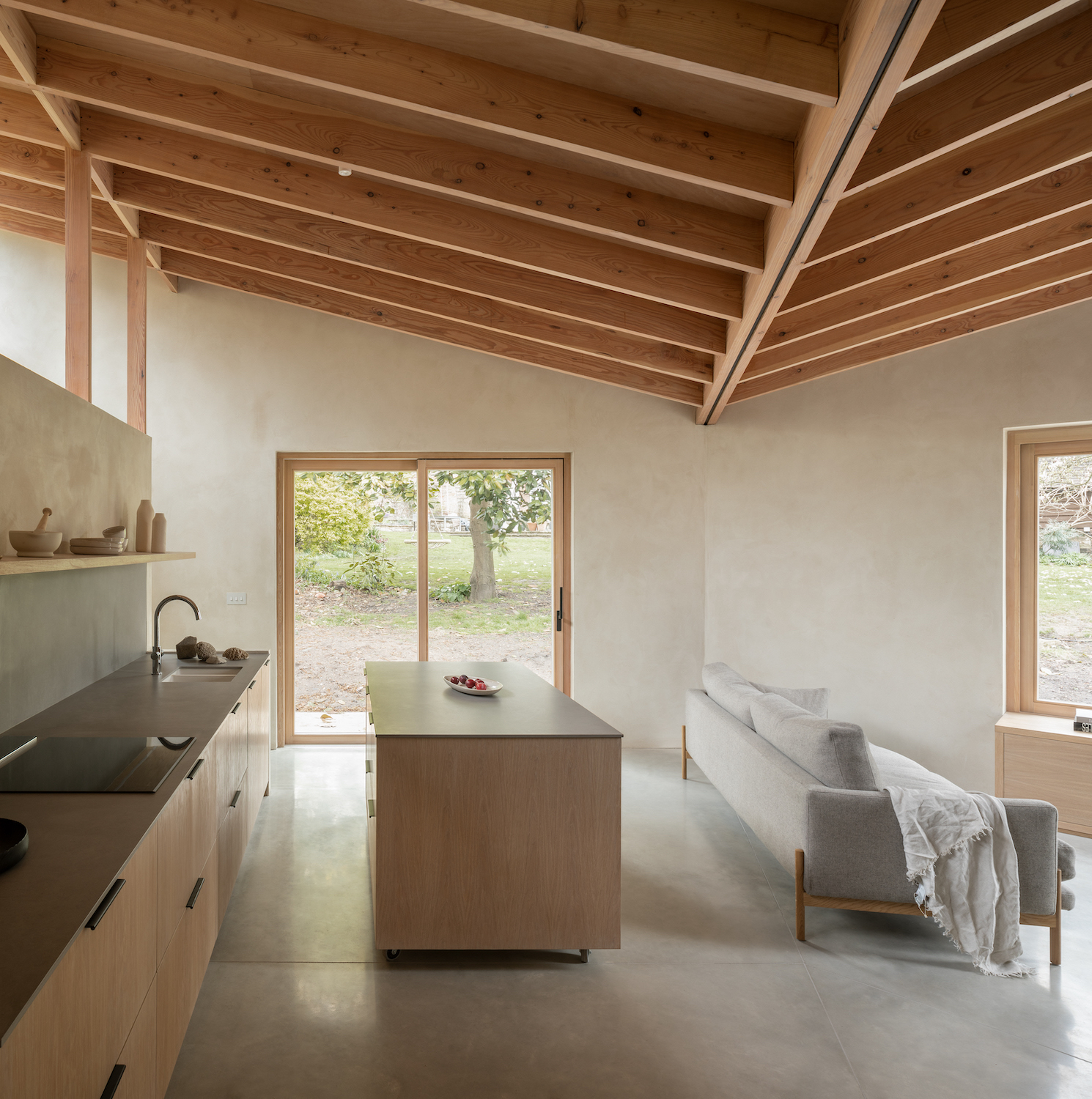
Butterfly House is a minimalist residence located in Esher, United Kingdom, designed by Oliver Leech Architects. Encompassing two bedrooms, the standalone dwelling offers provisions for a live-in carer. Located in a triangular corner of the main house’s garden, its unique shape takes cues from the constrained site. Four pitched structures fan out, deliberately angled to maximize views while maintaining privacy. A standout feature is its inverted ‘butterfly’ roof, clearly defined in the central open living space. The external burnt Japanese timber cladding ensures a harmonious blend with the surrounding natural landscape. Internally, exposed larch beams in the roof give dynamic variations in space – from compression to expansion.
Clerestory glazing ensures ample daylight, illuminating the interiors and showcasing the dance of shadows on clay walls. The entry is intriguing; a slightly sunken lobby which then ramps up, seamlessly connecting to the garden. To address future needs, provisions for accessibility are evident. The kitchen, for instance, features low-sitting storage units and an adaptable island on wheels, while the master bedroom and attached bathroom are designed for potential wheelchair access. Although functionally expansive, the design doesn’t compromise on aesthetics. High clerestory windows not only flood the space with light but also provide sky views, vital for such a confined site. An emphasis on spaciousness is evident, with design elements such as double-spaced rafters in bedrooms augmenting the room’s volume.
Materials used strike a balance between practicality and elegance. The polished concrete floors and subtle clay plaster walls maintain coherence throughout the dwelling, allowing the ceiling’s intricate designs to stand out. Bathrooms exude simplicity, illuminated by Velux skylights and adorned with white tiles, contrasting the exterior and amplifying privacy. Construction-wise, a larch timber frame supports the structure, supplemented by a well-insulated envelope, triple glazing, and air-tight design, ensuring energy efficiency and a sustainable future with possible heat-pump integration.


